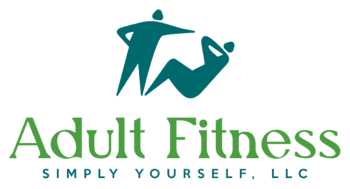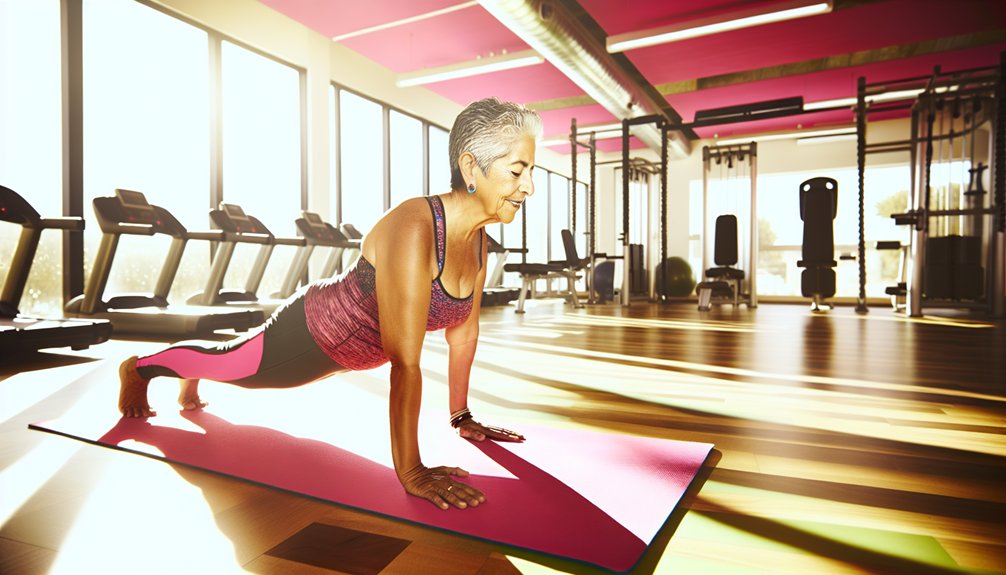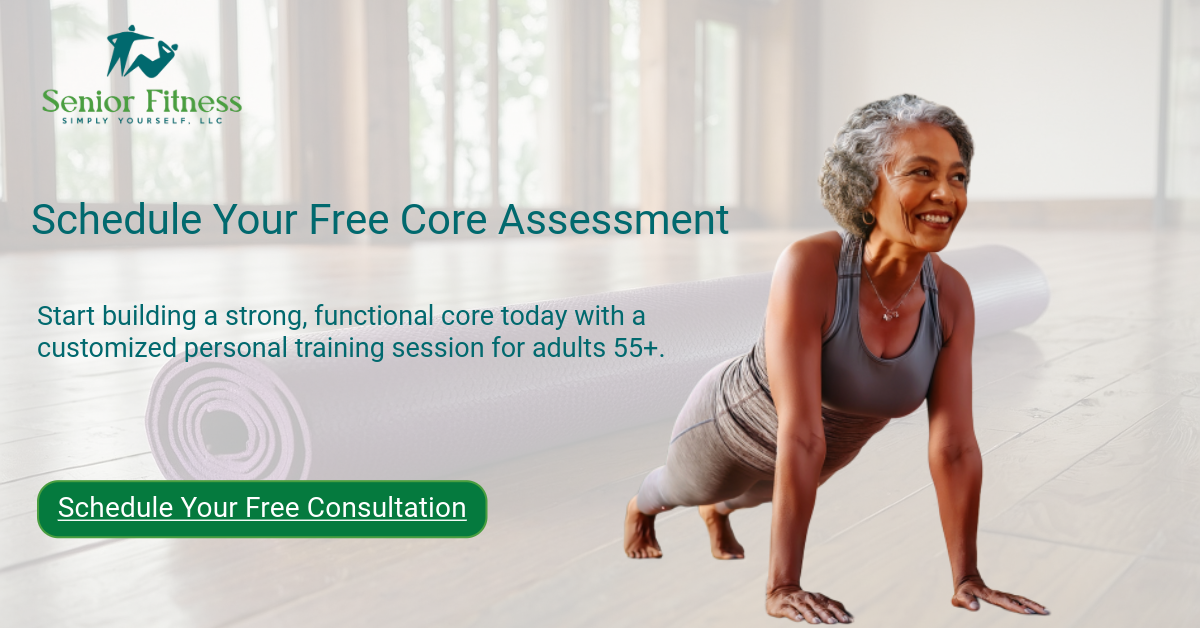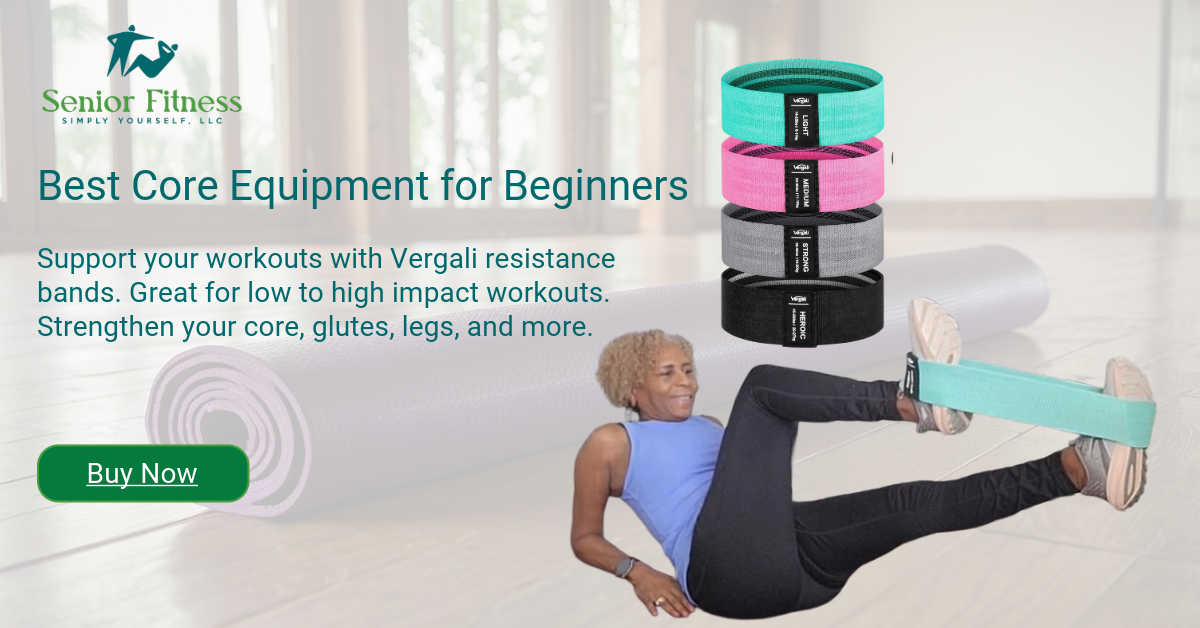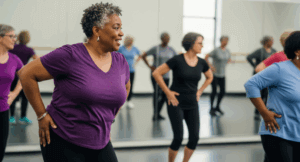As you age, maintaining core strength becomes essential for your overall well-being. A strong core supports balance and stability, reducing the risk of falls and back pain. It also plays a vital role in your daily activities and independence. Understanding the key muscle groups involved in core stability can help you make informed choices about your fitness routine. So, what effective exercises can you incorporate into your regimen?
The Importance of Core Strength for Older Adults
As you age, maintaining core strength becomes increasingly important, not just for balance and stability, but also for your overall quality of life.
For older adults, a strong core enhances daily activities like standing, bending, and lifting, making those routine tasks safer and easier. Weak core muscles can lead to back pain and difficulties in staying active, which might hinder your ability to enjoy favorite activities and increase dependency.
Strengthening your core through targeted exercises can boost coordination and flexibility, essential for mobility and independence. The health benefits don’t stop there; improving your core strength also promotes better posture.
Prioritizing core exercises can significantly enhance your overall health and well-being, allowing you to serve others and enjoy life fully.
Key Muscle Groups Involved in Core Stability
Understanding the key muscle groups involved in core stability is essential for building strength, especially after 55. Your core comprises important muscles like the rectus abdominis, obliques, and transversus abdominis, which work together to stabilize your torso and support good posture.
The erector spinae in your back is vital for maintaining an upright position, preventing slouching and discomfort. Don’t overlook your gluteal muscles; they contribute to overall balance and core stability during functional movements like walking and climbing stairs.
Additionally, pelvic muscles, such as the iliacus and psoas, play a crucial role in leg lifting and side bending. A strong core supports essential activities, helping you maintain independence as you age and continue serving others.
Getting Started with Core Workouts
Starting a core workout routine doesn’t have to be daunting, especially when you take it step by step.
Ready to build a stronger core? These three exercises are a fantastic starting point. They’ll help you develop core stability and control, and can be modified to suit your current fitness level. Remember to focus on your breath and proper form throughout each movement. Listen to your body and don’t push through any pain.
Let’s dive into how each of these exercises contributes to a strong core and supports healthy digestion:
Bridge Pose Variation Arms Flow
This yoga-inspired exercise is excellent for strengthening your glutes, hamstrings, and deep core muscles, like the transverse abdominis. The added “arms flow” intensifies the challenge, making your core work harder to maintain stability. Beyond strength, Bridge Pose also aids digestion by gently stretching and stimulating your abdominal organs, which can help alleviate sluggishness and encourage better movement through your digestive tract. The subtle chest opening also promotes deeper, more beneficial breathing.
Pilates 100 Flow
The Pilates 100 is a classic for a reason, primarily targeting your deep abdominal muscles, including the transverse abdominis and obliques, alongside the rectus abdominis. The sustained hold and rhythmic arm pumping build incredible endurance and strength in your entire core. Crucially, the controlled, deep breathing in the Pilates 100 acts like an internal massage for your digestive organs, boosting blood flow and activating your “rest and digest” nervous system, which can significantly reduce stress-related digestive issues.
Supine Forearm Scissors Flow
This dynamic exercise powerfully engages your lower abdominal muscles, particularly the rectus abdominis and transverse abdominis. It’s fantastic for strengthening the core muscles that support your spine and pelvis by challenging you to maintain stability while scissoring your legs. While less direct than the other two, the intense abdominal activation can still gently stimulate digestive organs through internal compression and decompression. A strong core, fostered by exercises like this, also supports better posture, which in turn allows your organs to function more optimally.
Tips for Maintaining Core Strength Over Time
As you continue your journey in building core strength, it’s essential to stay engaged with your workouts to ensure long-term benefits. Incorporate core exercises like planks and bridges at least 2-3 times a week to enhance your balance and stability.
Mixing up your routine not only keeps it interesting but also targets different muscle groups, preventing imbalances. Focus on controlled movements to maximize engagement of your abdominal muscles while minimizing injury risks. This practice improves posture and alignment, reducing aches and pains.
Complement your training with flexibility exercises like yoga to support an active lifestyle. By maintaining consistency with core workouts and weight training, you’ll promote independence and overall well-being in your golden years.
